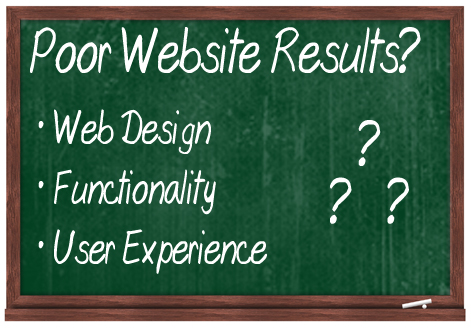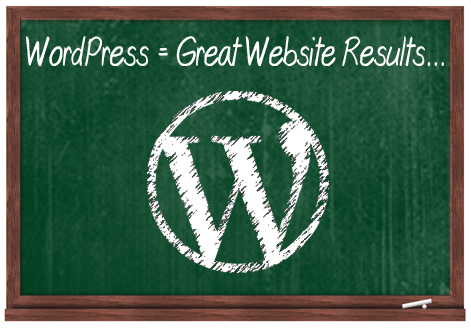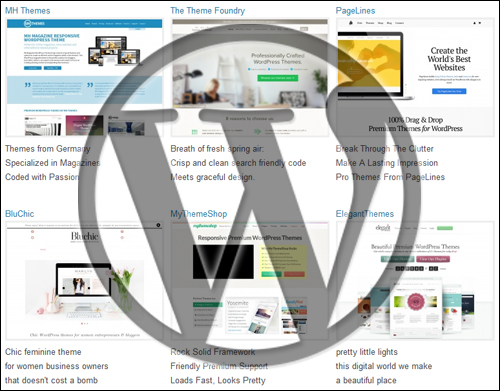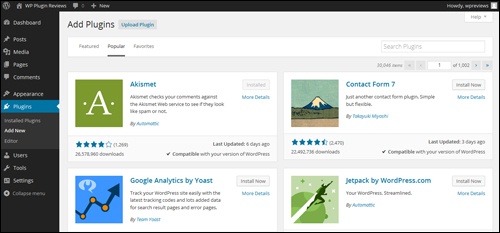 Are you missing out on business because of poor web design? No matter how professional your company is, a poorly-built website could lose you valuable business.
Are you missing out on business because of poor web design? No matter how professional your company is, a poorly-built website could lose you valuable business.
In a world where attractive design matters, your website’s design is very important to your business success. Your website may be the first thing that your web visitor sees and this could affect their purchasing decision.
Think about how you do research about products and services nowadays. Even if we’re only doing preliminary research, we will jump online and go visit a web site before taking the next step.
Now, try to see things from your customer’s perspective. How does your website appear to other people? Does your site invite people to approach and explore things further, or does it make them hesitant and unsure about what to do next?
The way your site looks is just the tip of the iceberg. There are so many other things than can influence your visitors’ perceptions and their purchasing decisions.
Can WordPress Fix A Poorly-Constructed Web Site?
Here are just a few key design problems that can affect your web site’s results:
Web Site Design Problems
Common design issues that can influence a potential customer’s perception of your site include the following:
- Color – Unattractive color combinations affect your site’s results. This also applies to using text and background color. There are ways to pick web colors correctly and even safe web color tools you can use to make sure that the palettes you want to use will display correctly across different devices. If in doubt, seek the services of a professional web designer.
- Design Elements – Pages that contain aesthetically uninteresting, outdated or just plain ugly images can easily turn visitors away from your website. Visitors can also be affected by subtle inconsistencies in the design elements and excessive use of design elements.
- Layout – The way your content is structured can impact the way users navigate around your site. Layout considerations also include how your navigational items, links, and other useful assistive features such as search boxes are placed, where menus are positioned on your site, page columns, etc ….
- Responsiveness – Since information is now viewed through a range of devices with different-sized browsers, it’s important that the design of your website be fully responsive. If your website does not resize automatically to fit your content on all devices, browsers, and platforms, you may incur business opportunity losses.
Functionality Problems
Some common website functionality problems can include some or all of the following:
- Persistent website errors – A huge turn-off for visitors is landing on a site where some hyperlinks don’t work, videos don’t play and graphics aren’t displaying. Subpar functionality is not acceptable, especially when you are trying to come across as a professional. Your digital presence reflects your company. It’s vitally important to make sure that all your links, videos, and images are working at all times. Sometimes, problems are caused by factors like your web hosting, or you may not even be aware of it, but it’s important to ensure that remain proactive and that you attend to problems as soon as possible.
- Feature limitations – If your website provides users specific functionality, then make sure that these functionalities are not limited. For example, if you would like to sell products on your site, make sure that you provide visitors with full e-commerce features that allow them to choose and add items to a cart, apply coupons, pay using a credit card or PayPal, receive purchase notifications, receipts, and email confirmations, etc.
Poor Web User Experience
Invariably, the area that most suffers due to a poorly-designed website is in the realm of the “user experience”.
A poor user experience can leave a bad taste in visitors’ mouths and lead them to vent their disappointment across social networks, forums, review sites, commenting sections, etc ….
Here are some common problems that can lead to a poor user experience:
- User-Friendly – Your website must be user-friendly. Your service information should not be kept in obscure corners. Your visitors want user-friendly features and they want to find what they are looking for as quickly and as effortlessly as possible. Make your content searchable and if you plan to add downloadable information to your site (e.g. forms and documents), make sure that visitors are given instructions on how to download and access your files.
- Organized – If your website isn’t cleanly organized and user-friendly, you run the risk of losing not only prospective buyers but existing customers too. Features like search engine-friendly URLs, product and service categories and sections where topic-related content can be easily found will help provide visitors with an enjoyable user experience.
- Eye-Catching Features – Users want websites that are easy to use, well organized, and that provide them with eye-catching options. This requires achieving a balance between attractive, modern web design and compelling web copy that engages your users. For example, highlight hyperlinks which direct visitors to your product pages by inserting eye-catching graphics alongside well-written descriptions. This is effective and can help improve not only the user experience on your website, but can also help you generate more sales and conversions.
- Engaging Website – Another aspect that helps visitors want to stay longer on your website is to provide interactive features that engage users, like the ability to comment on, share, like, download and recommend your content, interact with your support staff via a responsive helpdesk, support forum, live chat, schedule appointments, make reservations, etc … Additionally, you want visitors to browse quickly through your site and access your information without waiting around for content to load, so site speed optimization is important.
- Trustworthy Site – One of the most important and often most ignored aspects of creating a great user experience is to ensure that users feel comfortable interacting with you online. To reassure your web visitors that your business is credible, trustworthy, secure and professional to deal with, make sure that your site includes legal pages like a contact page, privacy policy, terms of use, security information, financial disclaimers, etc.

(Site design issues)
As the above shows, there are many areas that can contribute to a poor user experience and negatively impact your business success online. If your site is poorly constructed, you run the risk of not only losing prospective clients but also your current customers too.
Now … what if you have arrived on our website because you currently have an existing website with design issues that you feel could be affecting your business?
First, keep in mind that getting a complete website overhaul can take time and can end up being fairly costly depending on the problem and what kind of website you currently have, especially if the work requires rewriting web code.
If you are currently in the process of getting a new website built or redesigning an existing website, then we suggest that you consider using WordPress.

(WordPress can improve your website results!)
We plan to publish a lot more in-depth posts about WordPress on this site, but here are just a few of the things to keep in mind about why you should seriously consider using WordPress:
WordPress – Unique Web Design Features
WP themes are unique web design templates that enable you to quickly modify the look of your website without touching the website’s content and modifying any of the underlying software functionality.
There are literally thousands of professionally designed WP themes available that can be downloaded. Many of these are either freely available, or can be bought for a relatively small price, saving you hundreds of dollars on the cost of website design.

(WordPress Themes)
Most WP themes are fully responsive and provide site owners with flexible and customizable options for changing the design on your site like the color, template elements like menus and headers, page layouts and more. This is just part of what makes WordPress an ideal tool for helping you achieve a design for your website that works for your business.
Learn about themes here:
WordPress Plugins – Virtually Unlimited Scalability
Another compelling reason to build your site using the WordPress content management software is that WordPress provides users with scalable features through add-on applications called “plugins.”
Plugins, like WP themes, integrate with your site to provide you with virtually unlimited flexibility.
Earlier we talked about areas like subpar functionality and feature limitations as part of the reason why a poorly built website can cost you money.
Plugins can help you overcome these issues quite easily. If there is a functionality you want to add to your site, just install a plugin that will do what you want done.
Want a plugin that will let you know about any problems with your site like hyperlinks not working, videos not streaming, images that aren’t showing or even alert you if your whole web site is down? No problems … there are WP plugins that can help you fix that, or notify you about problems so you can take immediate corrective action!
Want a plugin that will turn your site into an online store or provide you with a complete e-commerce solution? Again, no problem! There are several plugins that will help you sell products online and provide your visitors with full e-commerce features that allow them to easily choose and add items to a cart, use discount codes, complete their purchases using credit card or PayPal, receive purchase notifications, receipts and email confirmations, etc.
And just like WordPress themes, there are tens of thousands of fantastic plugins for WordPress users that can be downloaded for free, or that are extremely affordable and will save you thousands of dollars on the cost of web development.

(WordPress Plugins)
You can learn more about plugins here:
WordPress – An Interactive Web User Experience
In addition to being able to correct problems caused by a poorly-constructed website, WordPress can also help you provide customers with a great user experience.
WordPress provides beautifully-designed and visually-exciting themes that cover all kinds of uses and feature-rich plugins that allow customers to connect, engage and interact with you. With the right combination of a WordPress site, WordPress themes, plugins and great content, you can create a a highly interactive and engaging user experience that will keep users coming back to your website.

As we’ve previously stated, consumers nowadays do research online before they make purchasing decisions. If your website isn’t designed to provide your visitors with a rich user experience, these prospective clients will not return and simply move on to another business that does provide them with a better website.
Hopefully, this article has given you a better understanding of problems that can affect your website and how WordPress can help you get better results online. To learn more about using the WP CMS platform please click on links to visit other posts we have published on this site.
***
"If you're new to WordPress, this can stand on its own as a training course and will stay with you as you progress from beginner to advanced and even guru status." - Bruce (Columbus, Ohio)
***

